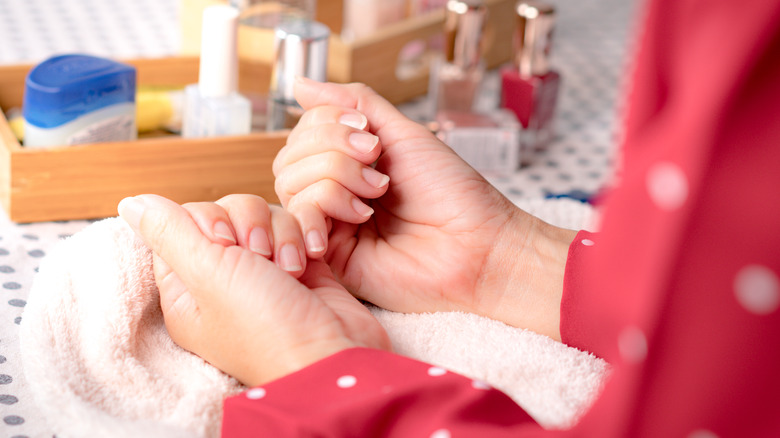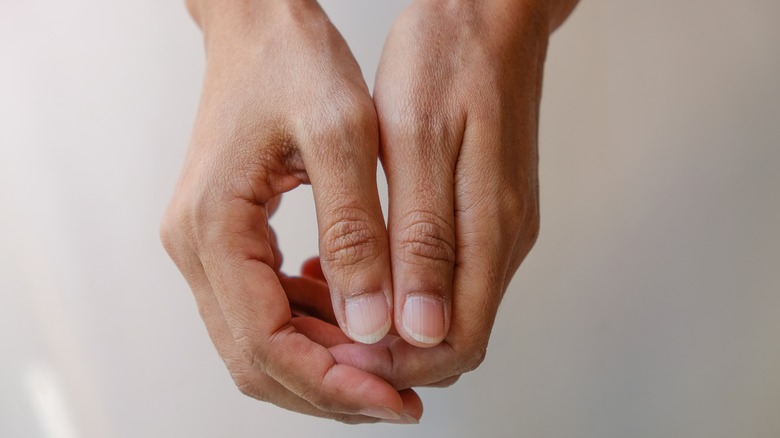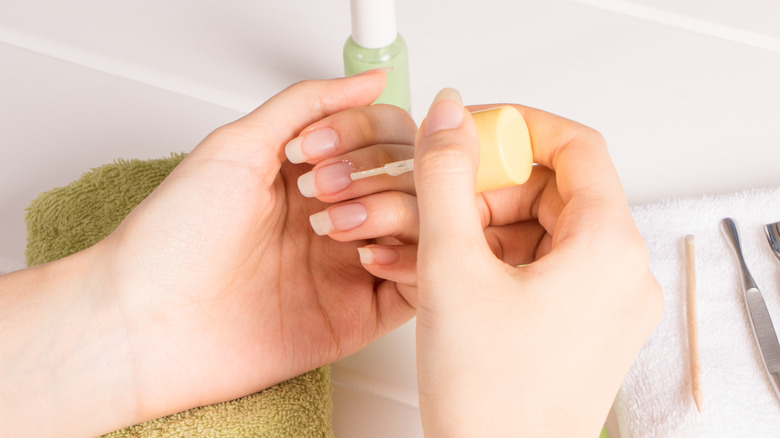Ridges Appearing On Your Nails Can Give You Insights Into Your Overall Health
Your nails reveal a lot about your health. Characteristics like color, strength, and marks can indicate what's going on internally. Board-certified dermatologist Ellen Marmur said to Allure, "When your skin is unhealthy, your nail matrix is compromised and forms an unhealthy nail. Conversely, when you take good care of your body, your skin and nails will be healthier."
One important indicator is lines along your fingertips. Ridges appearing on your nails can mean a variety of things. What they signify often relies on their direction and depth. If you have any worrisome nail issues, it is normal and recommended to see a specialist. According to Dr. Marmur, "The nails are a dermatologist's dream to see inside some of the body's ailments." So, you'll be making a doctor very happy. However, while some nail lines are a cause for concern, others are completely normal. Here's what you need to know about ridges on your nails.
Why fingernail ridges may be a cause for concern
Fingernail ridges can be a sign of underlying conditions or nutrient deficiencies. Depending on which direction these dents form, the different stories they tell. Vertical ridges that extend from your cuticle to the nail's free edge are common. Often these vertical lines occur with aging. Think of it like wrinkles for your nail beds. Apart from aging, these dents can point to dry skin or eczema.
Horizontal ridges, also known as Beau's lines, are a sign of trauma to your nails or internal issues. Health problems that affect your nail matrix or leave you nutrient deficient can cause these dents to appear on your fingernails and toenails. Diabetes, high fever, eczema, and heart attacks are some conditions that can cause Beau's lines. If you have horizontal ridges on your nails, it doesn't hurt to have your doctor take a look.
There are preventative measures to reduce the likelihood of vertical lines and trauma-induced ridges — and it starts by giving your nails some TLC.
The TLC your nails need
While cuticle care is the key to longer nails, healthy nails are the basis for smooth and strong nail beds. To combat brittle nails, Dr. Amanda Zubek, the medical director of Yale Medicine Dermatology, recommends a prescription-strength nail hardener. Your dermatologist or primary physician can prescribe these nail treatments.
Settling for an OTC nail strengthener can do more harm than good. In an interview with Prevention, Dr. Zubek warns, "In-store hardeners typically contain formaldehyde, which can temporarily harden nails in the short-term, but ongoing use can actually cause the nails to become more brittle and weak."
You might be tempted to file away your nail ridges, but this can be damaging. Dermatologist Saya Obayan told Good Housekeeping, "I generally don't love buffing because it causes destruction to the nail plate, and it can make it thinner and much more likely to break." Dr. Obayan recommends buffing no more than twice a month and applying a nail hardened afterward.


